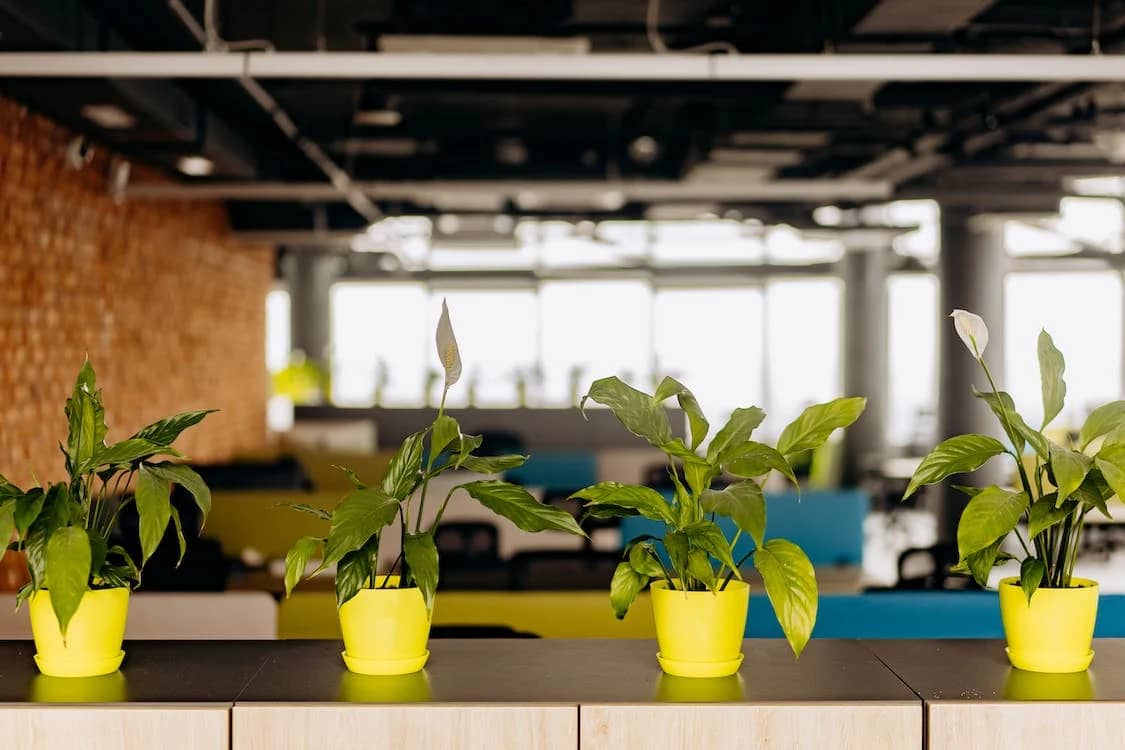
How Biophilic Design Is Making Huge Impacts On Employees Health?
Biophilic design refers to the integration of natural elements into office interior spaces to create a harmonious and healthy environment for occupants. This design approach is based on the idea that human beings have a deep-seated connection with nature
Read Our Blog On Maximizing Small Office Spaces with Clever Design Solutions
In recent years, the trend of biophilic design has gained popularity in the office interiors sector, as companies seek to create spaces that are both aesthetically pleasing and conducive to employee productivity and satisfaction.
Important Features Of Biophilic Designs In Office Interiors

Another important aspect of biophilic design is the inclusion of plants and greenery into the office environment. Plants have been shown to have a calming effect on people, and they can also help to purify the air by removing pollutants and reducing levels of carbon dioxide. There are a variety of ways that plants can be incorporated into office interiors, from simple potted plants on desks or windowsills, to living walls and green roofs.
Water is another important element of biophilic design, as it is associated with feelings of calm and relaxation. This can be achieved through the use of fountains, aquariums, or other water features, or by incorporating water-based images or textures into the design of the space.
For example, an office interior might feature a wall mural or artwork that depicts a river or a waterfall, or it might have a feature wall made from natural stone or other materials that have a water-like texture.
Materials and textures are another important aspect of biophilic design. Natural materials like wood, stone, and wool can help to create a sense of connection to the natural world, while textures like rough stone, smooth glass, or plush fabric can provide sensory stimulation and help to create a feeling of comfort and relaxation. The use of natural colors, such as green and blue, can also help to evoke feelings of calm and connection to the natural world.
Finally, biophilic design also includes the use of natural forms and patterns, such as those found in nature, like the branching patterns of trees, the ripple patterns of water, or the spiral patterns of shells. These natural forms and patterns can be incorporated into office interiors through the use of artwork, murals, or even through the design of furniture and other elements of the space.
In conclusion, biophilic design is an increasingly popular trend in the office interiors sector, as companies seek to create spaces that are both aesthetically pleasing and conducive to employee productivity and well-being. By incorporating elements of nature, such as natural light, plants, water, natural materials and textures, natural colors, and natural forms and patterns, biophilic design can help to create a harmonious and healthy environment that supports the physical and mental well-being of occupants. Whether through the use of large windows, living walls, water features, or other elements, biophilic design offers a wealth of opportunities for companies to create office interiors that are both beautiful and functional.

0 comments